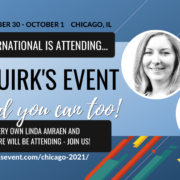BARE Shares – Engaging Employees Starts with Remembering What Your Company Stands For.
Businesses all over the world can do better at engaging employees at work. How can you establish a work environment that offers more than just a paycheck — the kind of place where every employee is motivated to give their best?
Here, BARE International shares an article by Denise Lee Yohn for Harvard Business Review on ‘Engaging Employees Starts with Remembering What Your Company Stands For‘.
‘Organizations spend over $100 billion annually to improve employee engagement. Yet according to Gallup, only 13% of employees are engaged — and disengaged employees cost U.S. companies $450 billion to $550 billion per year in lost productivity.
The reason why most engagement efforts fall short is that they’re designed to cultivate employees’ commitment in generic, general ways. They attempt to make people feel that they’re working for a responsible company or that the company’s leaders care about them. A more precise, robust approach is employee brand engagement, which establishes a critical link between employees and customers.
Employee brand engagement is achieved when employees are aligned and involved with the organization’s brand. It requires the company to have a clearly articulated brand identity and its leaders to cultivate a positive, multidimensional connection between employees and that brand identity. The goal is to make sure employees know what the brand stands for and are committed to reinforcing it with their actions.
Employee brand engagement differs from “employer branding” or “employment branding,” terms that refer to an organization’s efforts to enhance its image to attract and retain talented employees. It’s also more than “internal marketing” or “invertising,” which describe when an organization promotes its brand to employees as it would to customers and expects them to “buy” the message it’s trying to “sell” to them. It isn’t about selling anything, or even telling employees what they should do; it’s about informing, inspiring, and involving employees so that they want to support and advance the brand.
Only when employees are engaged with the brand will they think and act in the specific ways that produce the specific results the company is seeking. Employees must internalize the organization’s purpose and values so they make decisions that clearly support those priorities. Ultimately they design and deliver on-brand customer experiences that strengthen the brand’s competitive position and build equity in the brand.
Employee brand engagement has three dimensions:
Personal and emotional commitment. For example, employees feel an emotional connection with the brand and act as brand ambassadors, actively sharing positive information about the brand with their friends, families, and communities and recommending it to them.
Understanding the brand strategy. Employees understand who the brand’s target customers are, how the brand is positioned relative to competitors, and what makes the brand unique and valuable from a customer perspective.
Day-to-day involvement with the brand. Employees have appropriate access to tools and data about how the brand is perceived by customers and they actively nurture and reinforce the brand on a daily basis, at every touchpoint. Even those employees who don’t have direct customer contact understand and embrace their role in delivering on-brand customer experiences.
This kind of engagement is missing at most organizations. A Journal of Brand Management paper shows that four in 10 employees struggle to describe their organization’s brand or how they think customers feel their organization is different from competitors. Brand consultancy Tenet Partners reports that only 28% of employees strongly agree that they know their company’s brand values, and that only one in five employees strongly agrees that company leaders communicate how employees should out the brand values in their jobs.
To cultivate employee brand engagement, consider the multidimensional approach used by Lilian Tomovich, chief experience officer and CMO of MGM Resorts, and her team. MGM wanted to reposition itself from merely a casino company to a worldwide resort and entertainment company. It wanted to be known for entertainment venues and hotels that were not gaming-centric — such as the Bellagio and MGM Grand in Las Vegas.
Tomovich and her fellow executives knew that they couldn’t direct their transformation efforts only externally. MGM employees needed to be engaged with the company’s aspiration so they would deliver on it. So they initiated an internal engagement effort that they called “We Are the Show.” This not only reinforced the company’s desired identity as an entertainment brand but also helped seed the “SHOW” acronym that summarized its desired brand-led culture:
- S for smile and greet the guest
- H for hear their story
- O for own the experience
- W for “wow” the guest
They kicked off the engagement initiative with a summit for the company’s top 7,000 leaders. They explained why the company was embarking on the transformation and what accomplishing it would take. Then they showed those leaders how to train their direct reports, cascading the desired culture throughout the organization, so that after eight months all 77,000 employees would be trained personally by their managers.
In these training sessions, employees went through a curriculum to learn about and experience the attitudes and behaviors that embodied the new MGM Resorts brand values. For example, leaders took employees through property- and department-specific guidelines and expectations, such as “Be visible and accessible to guests, with open body language and friendly facial expression” for frontline employees. Leaders were given brand engagement tool kits containing a leadership playbook and an “engagement calendar” to help them plan the content and timing of training sessions. And they used teaching aids to engage employees in interactive exercises, such as role-playing and group discussions, so they could practice the desired behaviors and learn ideas and tips about how to deliver on the brand values in the customer experience.
MGM also developed a communications campaign that reached all employees from all angles. The campaign included posters that showed employees at work under the headline “This Is My Stage,” regular news updates to leaders and “daily team update” emails to generate enthusiasm across the board, and signage for “back of house” areas. These communication efforts created a 360-degree integrated effort that surrounded employees with messages about the brand so they wouldn’t be overlooked or forgotten.
All these efforts generated a valuable, vital link between MGM employees and customers. And as a result, the company accomplished a successful internal transformation of its culture and external transformation of its brand as evidenced by positive feedback in employee and customer surveys. The company also reported financial gains from its efforts, reporting increased revenues, REVPAR (a hospitality industry key metric), and net income.
Of course it’s important for employees to be excited about and satisfied by their work and to feel emotionally connected to their companies; leaders must continue to work on these foundations. But given how quickly management, strategies, and market conditions change, general employee engagement is not enough to keep everyone on track and building the right customer relationships the right way. Companies need stronger and more focused engagement.
Employee brand engagement doesn’t produce just happy, engaged employees; it develops happy, engaged employees who produce the right results. The company isn’t recognized just as a great place to work; the work itself becomes great. And the company doesn’t establish itself just as a great employer; it lays the foundation for great customer relationships.’
Read the full article at the source here.
BARE International was born from the need for mystery customer research at the national and global level. Today, we set the industry standard as the largest independent provider of customer experience research, data, and analytics for companies worldwide.
How can BARE International Help Your Business? Explore BARE International’s service offerings to reveal the true nature of your business .











